It’s no secret – the hashtag has become a prominent part of our everyday digital existence. A great number of hashtags are throwaway and fail to make any tangible impact concerning social media success and brand awareness. However, with the right ingredients, this simple yet effective digital marketing asset has the potential to make a significant mark.
Here we explore the origins of the hashtag, the phenomenon of #TBT (Throwback Thursday), notable hashtagging examples and tips on how to yield optimum results from your own creations.
The History of the Hashtag
While somewhat tenuous to today’s usage of the ‘#’ to communicate brand messages, spark meaningful conversations and expand one’s social reach, it’s possible to trace the origins of the hashtag back to the 14th century.
Prior to its use on telephones and, later, Twitter, the hashtag symbol derived from ‘lb,’ the Latin abbreviation for ‘pound.’ Thus, in the US, for some while the ‘#’ was referred to as the ‘pound symbol.’
In its contemporary format, the incarnation of the hashtag as we know it is credited to former Google designer Chris Messina:
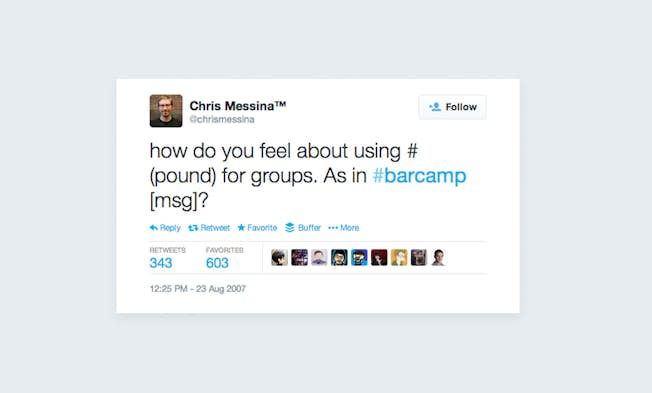
#TBT: A Hashtag Phenomenon
The World Wide Web has seen a host of notable hashtags in recent years, but arguably none have been more accessible, widely adopted, potent or enduring than #TBT (Throwback Thursday).
#TBT – or #ThrowbackThursday – is a social media phenomenon centered around users posting old, vintage images, often of themselves during a previous chapter of their lives, posted to their public feed with the hashtag #TBT.
Like most viral phenomena, the precise origins of #TBT are difficult to pinpoint; however, many say that, regarding post date, the hashtag can at least partially be accredited to actor @bobbysanders22.
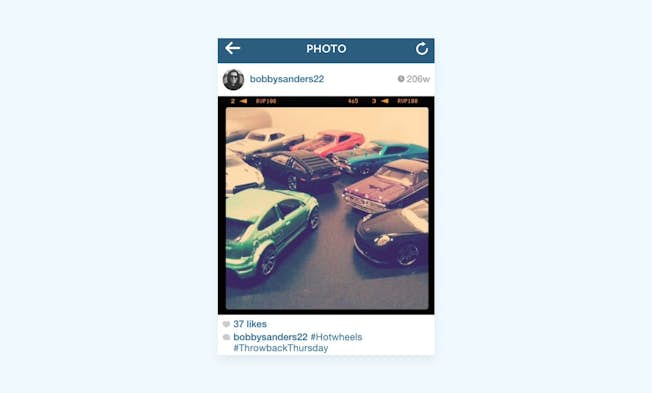
In a conversation with ‘Time’ magazine, Sanders explained that he dreamed the hashtag up on a whim, inspired by a sense of nostalgia for his Hot Wheels cars and the name of his most recent pair of sunglasses, named Throwbacks.
Due to his healthy Instagram following, the post earned a great deal of engagement and is likely to have spawned the #TBT social media phenomenon as we know it today.
A little celebrity or influencer endorsement helps any comment, piece of content or digital marketing initiative gain traction, but, that aside, it is emotion and nostalgia that have driven the hashtag’s success, and ensured its longevity.
Reliving positive memories or triumphs from the past feels good, and #TBT taps straight to the heart of this very notion.
The millennial generation is particularly nostalgic, and by offering a weekly opportunity to delve into the archives of the past and share special memories with your social media audience, the hashtag has – rather than lose its viral punch –continued to go from strength to strength.
Moreover, when you consider that emotional marketing messages are twice as potent as promotional ones, it’s not difficult to understand the success of #TBT.
The mass accessibility of #TBT – everyone can use it and enjoy the same warm sensations of nostalgia, from school-bound teens to Hollywood celebrities – along with its catchy and alluring use of alliteration, and its emotionally-driven nature have made #ThrowbackThursday one of the most-used hashtags of all time. And despite copycats such as #FlashbackFriday proving popular across social media, #TBT still reigns supreme as the original and best.
As Instagram is incredibly image-centric, #TBT lends itself perfectly to the platform. But, despite the hashtag being particularly sensational on Instagram, it has also proved hugely successful on Facebook and Twitter.
As Twitter is a very quick-fire platform, offering up droves of real-time textual – as well as visual – posts, #TBT is rife on the platform, with users from all walks of life utilizing the hashtag to share happy visions of their past lives.
Once the hashtag began to gain traction on Facebook, the platform developed an application named Timehop, inspired by #TBT, as a means of filtering through the piles of nostalgic images from particular time periods that are delivered to your account on a daily basis. While #TBT was the catalyst from this development, it seems that Timehop and #ThrowbackThursday serve to boost each other’s popularity.
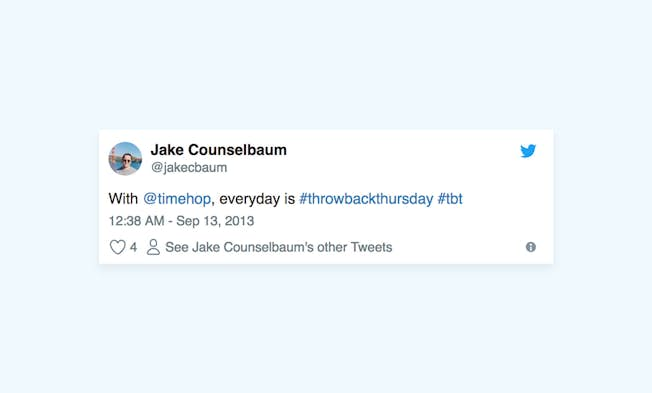
To assist with your #TBT marketing efforts, and better communicate the power of one of the web’s biggest hashtags, here are three inspirational images and posts:
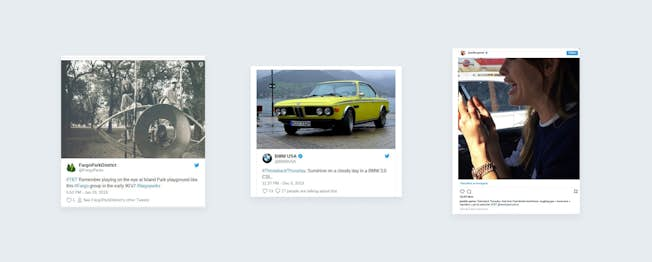
By leaning on the nostalgic power of #TBT, Fargo Park District helped to connect its community with the ‘good old days,’ inspiring residents to go outside, embrace nature and use the local amenities.
The hashtag is one of the most user-friendly and potentially valuable assets available to today’s digital marketers. If used sparingly and in a way that engages a healthy target audience in a positive way, the hashtag can work as a separate entity or as a campaign’s driving force – and #TBT is a testament to that.
BMW is synonymous with luxury travel and, having crafted so many aesthetically stunning vehicles during its history, the brand regularly engages its audience with #TBT shots of its various classic models.
Facebook, Twitter and Instagram are rife with celebrity #TBT posts and here Hollywood star Jennifer Garner demonstrates the power of humor coupled with nostalgia with her dental-calamity-based offering. With 55,947 likes and in excess of 3,000 comments, this certainly could be considered a successful post.
Coined by HubSpot, the ‘P.R.A.I.S.E-worthy’ #TBT posting checklist has helped brands to yield positive results by utilizing the hashtag in their marketing efforts:
Past: Does your image depict a past memory, development or event?
Relevant or Relatable: Is this particular post going to strike a personal chord with your target audience?
Appealing: Is your image visually striking and does it evoke positive emotions?
Interesting: Does your image have substance and will people care that you’ve posted it?
Shareable: Will your audience be likely to share your post with their peers?
Exciting: Are you excited or enthused to post your #TBT content? If not, chances are that your followers won’t be excited by it either.
#ThrowbackThursday is still one of the Internet’s most used hashtags, with 40 million posts tagged on Instagram alone. Sporting an appealing, emotive concept that offers brands and social media users never-ending archives of content, this simple yet potent idea has cemented itself as a longtime internet staple – a testament to the undeniable power of the hashtag.
The Do’s and Don’ts of Hashtagging for Your Campaigns
The appeal and potential of hashtags are clear. To help you, as a digital marketer, use this social media discipline to your advantage, here are some tips and suggestions:
Do:
- Be specific, but not discriminative: Unless you’re attempting to spawn a widely appealing phenomenon like #TBT, to enjoy the maximum level of engagement from your hashtags you should be as specific as possible, honing in on a passionate, targeted audience that will be likely to share your content and participate in the conversation – for example, if you want to promote a new toddler toy you’ve developed, you could use #toddlerlife or #toddlertoys, rather than #kidstoys. That said, you should never create a hashtag that obviously excludes a particular demographic in a negative way, as this could harm your brand’s credibility.
- Create relevant, unbranded hashtags: While branded hashtags hold value, to spark maximum engagement and place yourself before a relevant target audience, you should create hashtags directly relevant to your campaign, industry, product or service. For example, tourism business Destination British Columbia conjured up the hashtag #exploreBC. By doing so, the brand tapped into a highly-passionate community of travelers sharing dreamy imagery of the local area, earning a significant level of social media engagement in the process.
- Try hashtags that influential people in your industry are using: If established, notable and famous people within your sector or industry are using hashtags that are trending, weaving them into your social media posts will help you piggyback on waves of popularity, expanding your social media reach while also boosting brand awareness.
Don’t:
- Be too long-winded: Today’s average social media user scans the vast majority of content that appears before him or her. That said, by creating sentences from hashtags, not only is it unlikely that they will trend, but they will lack impact and be overlooked.
- Don’t overuse: When you’re creating a hashtag-based post, never use more hashtags than regular words, and never oversaturate your posts with hashtags – by doing so, they will lack focus and fail to make a meaningful impact. Often, two is the magic number per post.
- Don’t try to be too smart: While wordplay is a very effective means of standing out on social media, by trying to be too niche or too ‘clever’ with your hashtags, they may become lost in translation and fail to yield any positive results. Striking a happy medium between smarts and simplicity is the key to success.
From this tweet, the hashtag gained serious momentum, quickly morphing into the social media phenomenon it is today.
Due to its simplicity and easy-to-adopt concept, it was simple for businesses and everyday social media consumers to buy into the concept of the hashtag and its topical nature. Rather than scouring the web for hours on end trying to source valuable content or opinions on a subject of interest, a user could punch in a hashtag on his or her desired social media platform to return relevant results, or use a trending hashtag to become an integral part of the conversation.
Triumphant Examples of Hashtagging
To further inspire your hashtag generation initiatives, here are incredibly successful brand-generated hashtags that you should explore, using key elements of each campaign to your advantage:
CocaCola – #ShareACoke: To back its ‘Share a Coke’ campaign, during which a host of names (from Gert to Gerry) were printed on cans and bottles, the brand launched a hashtag that prompted a host of visually pleasing user-generated content that helped to boost the drinks company’s dwindling sales.
The ALS #IceBucketChallenge: This particular hashtag played a pivotal role in the reach and momentum of this iconic viral marketing campaign. For a deeper insight into the campaign, read our ALS Ice Bucket Challenge case study.
TNT – #DontKillSeanBean: World-famous actor Sean Bean is renowned for being killed off in two of his most notable roles, perishing relatively early on in both ‘Lord of the Rings’ and ‘Game of Thrones.’ Taking a humorous approach to promote his appearance in a new show, TV network TNT used the hashtag to gain an almost viral level of social media traction. It was even endorsed by the man himself:
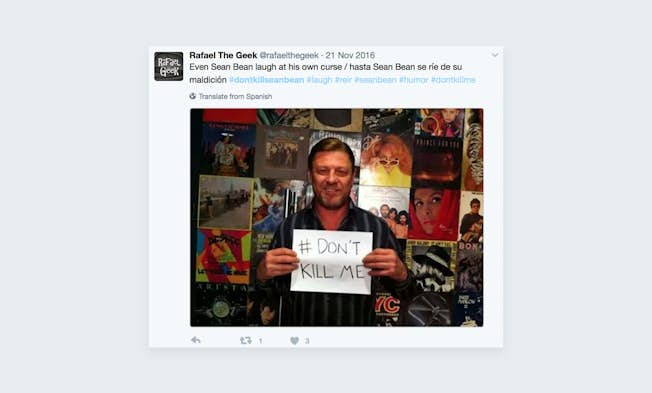
Key Notes
- Through mass accessibility, catchy alliteration, and nostalgia, #TBT is still one of the world’s most powerful and widely used hashtags.
- Humor, if implemented tastefully, can help drive hashtag engagement.
- #TBT offers infinite scope in terms of creativity and content.
- To get the most from your #TBT offerings, you should consult the P.R.A.I.S.E guidelines.
- Always be specific and non-discriminatory with your hashtags, create relevant unbranded hashtags and piggyback on the success of influencer hashtags.
- Don’t be too long-winded, too confusing, or too ‘wordy’ with your hashtags, and always use them sparingly to make a maximum impact.
- Study our suggested brand-based hashtag case studies to further your learning and gain inspiration for your own creations.
Upgrade to Power Membership to continue
your access to thousands of articles, toolkits, podcasts, lessons and much much more.
Become a Power Member- Login
- View Courses
- - - -
- Courses
- Resources
- - - -
- My Account
- Change Password
- Logout





